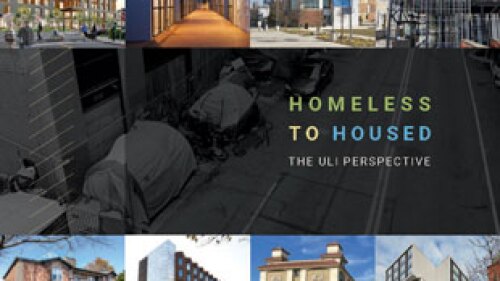The policies of racial segregation and redlining have had generations-long effects on the health and well-being of urban inhabitants, attendees heard at the ULI Virtual Fall Meeting panel, “Deconstructing Segregation: Understanding Local History as a Basis for Equitable Development.”
Robert Nelson, director of the Digital Scholarship Lab at the University of Richmond, raised the question of what such a combination of policies has meant and done to society. “At its core, it directed private and public capital to white families that were living in the suburbs for decades, and it created a cycle of disinvestment near the center of cities where the residents were African Americans,” he said.
He added, “We see another measure of the legacy of these, such as pre-term births and heat islands. There are also correlations between redlining in the 1930s and health disparities today. Redlined areas have higher rates of asthma, kidney disease, diabetes, and hypertension than green-lined neighborhoods.”
Redlining refers to a practice put in place in the 1930s by the Home Owners’ Loan Corporation (HOLC), a federal agency. HOLC would send “area description” forms to lenders and local developers across the country who knew the areas well enough to understand local real estate dynamics. The area description was meant for use in assessing the mortgage security in areas of American cities.
Using the data gathered from the local area, HOLC would categorize a city using four colors: green for the best areas, “where good mortgage lenders with available funds are willing to make their maximum loans, perhaps up to 75 to 80 percent of appraisal,” according to HOLC guidelines. Blue was considered “still desirable: neighborhoods where good mortgage lenders will have a tendency to hold commitments 10 to 15 percent under the limit, or around 65 percent of appraisal,” he said. Yellow neighborhoods were “characterized by obsolescence [and] infiltration of lower-grade population,” and red neighborhoods were described as having “detrimental influences in a pronounced degree, under-desirable population or infiltration of it.”
HOLC recommended that lenders “refuse to make loans in these areas or only on a conservative basis,” Nelson said. Many African Americans were segregated into these redlined areas and denied opportunities afforded to white residents of “better” neighborhoods.
“These documents are very clear on an idea that’s really fundamental to segregation in the 20th century, and that idea is that African Americans constituted a profound threat to property values,” said Nelson. “We see it’s so pronounced a threat that proximity, not even residency, is seen as a threat to property values, and it has material consequences. In these areas, if you wanted to buy a house from [a lender], it was more difficult to get a mortgage or as much finance as in a green or blue neighborhood. These are not just racist attitudes. They were racist policies, and these were made by the HOLC, which was a federal agency. These are state-sanctioned, state-endorsed racial policies.”
Dr. Mindy Fullilove, professor of Urban Policy and Health at the New School in New York City and the University of Orange in Orange, New Jersey, pointed out that redlining was not the only segregationist policy implemented by the U.S. government over the years.
“One of the things about redlining is it’s one of a series of policies that have shaped the American city,” Fullilove said. “It’s not the sole policy. The maps are so startling and so stark, and they’ve been hidden in the archives for a long time. There were other terrible policies as well, and one was urban renewal.” Urban renewal refers to a policy under which an area of the city would suffer disinvestment, thus creating blight, which would create conditions leading the city to demolish the area and create new, more expensive housing, driving the original residents out and dissolving its original character.
“When development happens, it sometimes feels like development has been done to people and not with people or for people,” said Lisa Gordon, president and chief executive officer of Atlanta Habitat for Humanity, and a board member of ULI’s Terwilliger Center for Housing and panel moderator.
The panelists agreed that though progress has been made, there is still a long way to go to correct the racist policies of the past.
“The good news is, if racist real estate policies and practices have helped produce policy inequities, that means that anti-racist policies and practices might have some effect on undoing that,” Nelson said. “I am no expert on contemporary housing issues; I’m a historian. The lesson I take from that history is to focus on people, not just places. This has to be thinking not just about investing in places, which is what urban renewal tried to do. You have to invest not just in infrastructure like parks, but you have to invest and make sure that housing is affordable. Who’s going to benefit from that has to be in mind. Not just improving the area, but improving the quality of life for the people that live in that area.”
Fullilove told participants, “Talk to people in your neighborhood, particularly ones that are living in formerly redlined areas. They know their histories better than historians do, and they can testify to that. I think looking at the structures has to be supplemented by talking to people and understanding their lived and emotional experience, the trauma that these policies visited upon particularly people of color over the course of generations.”
Gordon said, “As developers and stakeholders, if we do nothing, the situation will continue to perpetuate. If our communities do not respond differently, we will not see the change that we need. The structures in place will perpetuate itself.”
She concluded, “The historic information means we can actually do something to change, and I’m confident that ULI leadership and ULI members will embrace the things we need to do to see these changes reversed.”




